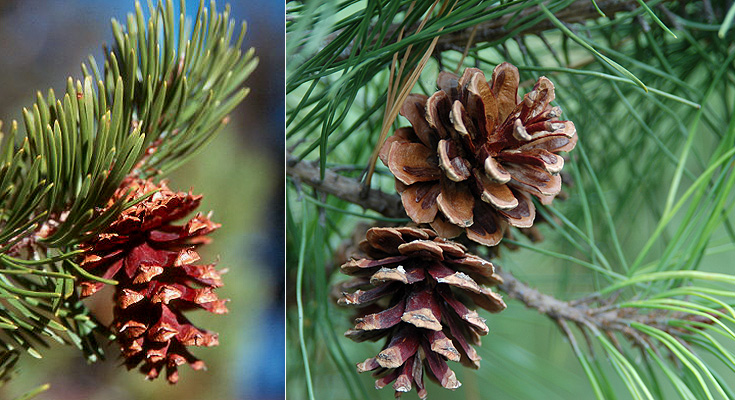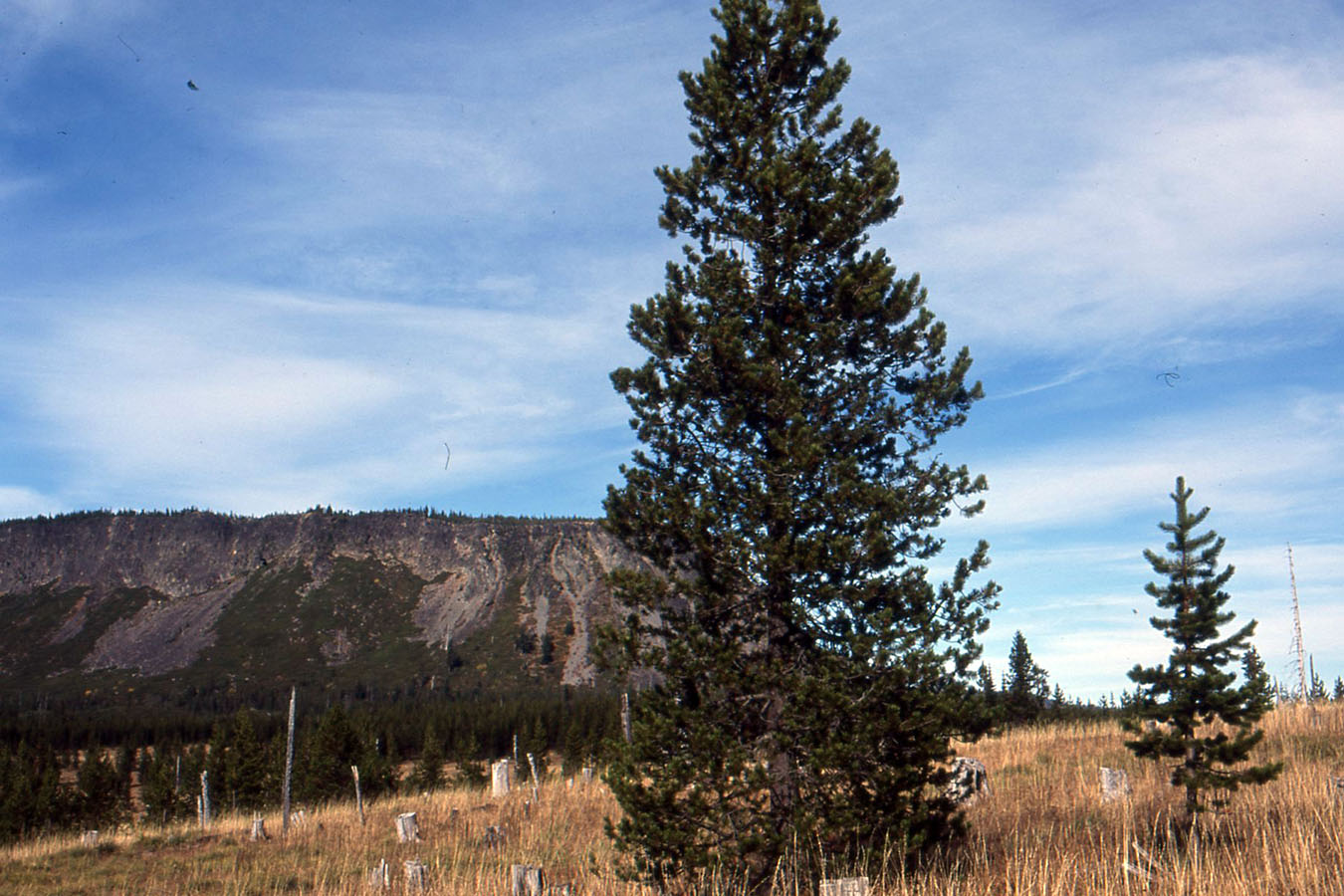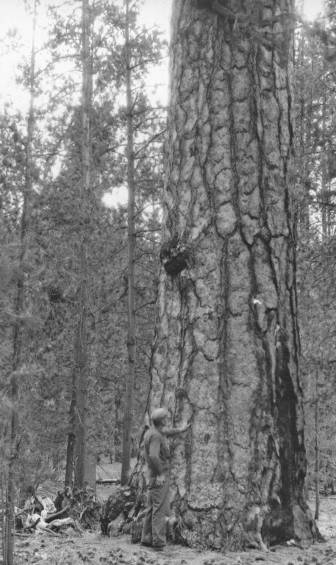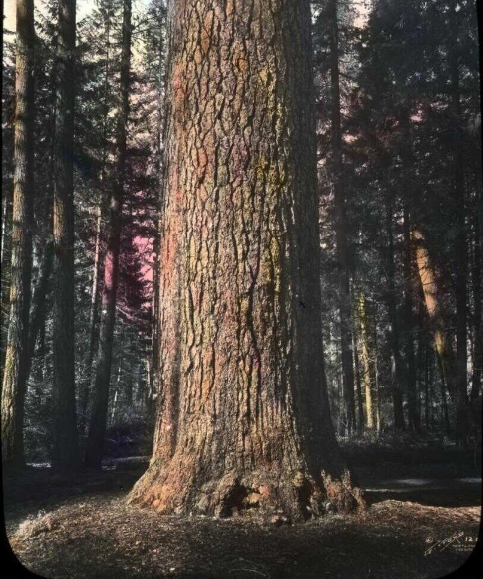Oregon's only native two-needle pine, Pinus contorta, commonly called lodgepole pine, is widely distributed across the state in a variety of diverse ecological habitats, from windswept ocean shores to mountaintops.
Pinus contorta is named for its gnarled, twisted shape in its seashore habitat or, perhaps, the gentle twist in its paired needles. Three named forms in Oregon have been treated as varieties, subspecies, or distinct species: shore pine (var. contorta), lodgepole pine (var. latifolia), and Sierra lodgepole pine (var. murrayana). Other common names are black, scrub, coast, or tamarack pine. Until recently, only shore and lodgepole pine were thought to be in Oregon.
Shore pine grows within a few miles of the coast from southern Alaska, along the Oregon coast, and through northern California. Lodgepole pine grows in the mountains, from the Yukon and lower Northwest Territories of Canada, south in the Cascade Range through Washington, in the mountains of northeastern Oregon, and south in the Rocky Mountains to Utah, Colorado, and southwest South Dakota. Sierra lodgepole pine grows in the Cascade Mountains of Oregon, south through the Sierra Nevada Mountains to northern Baja California.
Pinus contorta is among the most ecologically diverse of all the pines. Shore pine often grows in low-nutrient sand dunes and coastal bogs or where the land is exposed to strong prevailing winds, driven sand, and salt spray. The other two varieties are found in low to high montane forests under situations intolerable for other conifers. The dry pumice soils around Crater Lake have extensive even-aged stands of Sierra lodgepole pine.
Lodgepole pine has a unique strategy for dealing with fire. Its cones remain tightly closed until heated in a stand-replacing fire. Then the cones open to release all their seeds at once. The other varieties have less persistent cones, with seeds released before the next major fire, which is sure to come.
The largest known lodgepole pine grows in Idaho and is 156 feet high and 133 inches in circumference. The largest known shore pine is at Bryant, Washington, and is 101 feet high, 138 inches in circumference. The largest Sierra lodgepole is 116 feet tall, 245 inches in circumference. Oregon co-champions, located in Deschutes (height 87 feet, circumference 145 inches) and Lane counties (height 104 feet, circumference 96 inches) are listed as var. latifolia. A Sierra lodgepole pine in California was dated at 471 years. One hundred years is relatively old for the other varieties, considering fire prevalence and bark-beetle infestation.
Native Americans used Pinus contorta as a medicinal to treat a variety of ailments, from rheumatism, colds, sore throats, and tuberculosis to gonorrhea. The inner bark was used for emergency food for both horses and humans. The slender, tall, straight trunks of lodgepole pine also were used as teepee frames. Europeans use the trunks of the lodgepole pine for lumber, cabin construction, fence railing, and firewood. Shore pine is frequently used to control the expansion of sand dunes. Its ecological roles include wildlife habitat, succession, and regeneration on difficult sites.
-
![]()
Lodgepole pine, Willamette National Forest, 1942.
Courtesy Library of Congress, Russell Lee -
![]()
Lodgepole pine.
Courtesy Oregon State University -
![]()
Lodgepole pine.
Courtesy Oregon State University
Related Entries
-
![Ponderosa pine]()
Ponderosa pine
Ponderosa pine (Pinus ponderosa)—also known as yellow, western yellow, …
-
![Sugar pine]()
Sugar pine
Sugar pine (Pinus lambertiana) is one of the great conifers of the west…
-
Whitebark pine
Whitebark pine (Pinus albicaulis) is arguably Oregon's quintessential t…
Related Historical Records
Map This on the Oregon History WayFinder
The Oregon History Wayfinder is an interactive map that identifies significant places, people, and events in Oregon history.
Further Reading
Arno, S. F., and R. P. Hammerly. Northwest Trees: Identifying and Understanding Our Native Trees (revised ed.). Seattle: Mountaineers, 2007.
Jensen, E. C., and C. R. Ross. Trees to Know in Oregon (revised ed.). Corvallis: Oregon State University Extension Service, 2005.
Moerman, D. E. Native American Ethnobotany. Portland, Oreg.: Timber Press, 1998.






